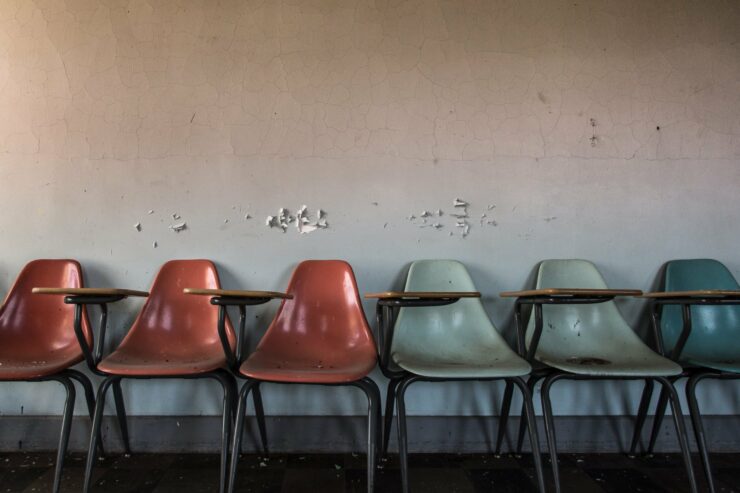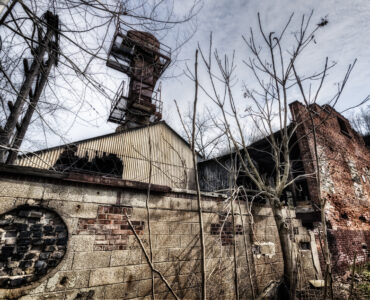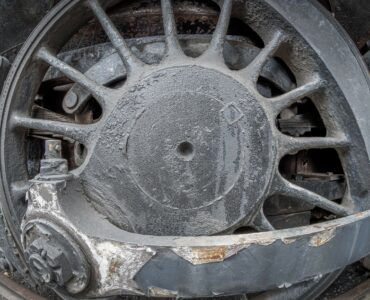History
The New York State Inebriate Asylum, which later became the Binghamton State Hospital, was the first institution designed and constructed to treat alcoholism as a mental disorder. Located in Binghamton, NY, its imposing Gothic Revival exterior was designed by New York architect Isaac G. Perry and though the first cornerstone was laid in 1858, construction was not completed until 1864. In 1993, the main building was closed due to safety concerns. The asylum appears on both the state and national lists of Historic Places, but it is currently in a state of disrepair and is one of the most endangered historic places in the nation, according to the National Trust for Historic Preservation. The building was declared a National Historic Landmark in 1997.
Through a series of events and connections obtained by my friend and shooting partner Louis Quattrini of Louis Q Photography we were granted a one-time only all access pass to this amazing landmark. To those curious out there that are interested in this site, I urge you to just enjoy the photos and do not attempt to enter or go near this site. It is heavily patrolled and video monitored 24 hours a day. This was special access granted by the state for special purposes and we are very grateful to the powers-that-be to allow us this wonderful opportunity.
Normally in my photo essays I will include past history and background information on a site. In this case circumstances however, which I am sure you can understand, have deterred me from taking that route. So, I have decided that instead of the usual running commentary, I will for the first time, just post the photos from the shoot and allow your imagination to take you into another world. At the end of the gallery I will post informative links about the architect and historical information. Enjoy the shots and please consider purchasing some prints to help further my work!
The Shoot
About Isaac G. Perry ~ The Architect
Born in Bennington, Vermont, Perry was raised and educated in Keeseville, New York, where his parents relocated in 1829. Between 1832 and 1854 he completed an apprenticeship and entered into partnership with his father, Seneca Perry, a shipwright turned carpenter. By 1847, Seneca Perry and Son were advertising locally as carpenter-joiners who undertook masonry work. The Perrys were well known for their skills at constructing spiral staircases, and the younger Perry, according to one biographer, earned a local reputation as an architect before leaving Keeseville.
Isaac Perry’s architectural work in Keeseville is not well documented, but it is likely that the Emma Peale residence, called “Rembrandt Hall” (1851), a Gothic Revival-style Downingesque cottage that contains a spiral staircase by the Perrys, is an early design. By 1852, Perry relocated to New York to apprentice in the office of architect Thomas R. Jackson (1826-1901). Jackson, a native of England who migrated to the United States as a child, had risen to the position of head draftsman in the office of Richard Upjohn (1802-1872), one of New York’s most prominent designers. The nature of his work with Jackson and the projects in which he collaborated, are not known.
Perry is considered to have been the first state architect in New York. In 1883, governor Grover Cleveland appointed him to oversee construction activities at the state capitol. Although his official title was “Capitol Commissioner”, by the mid- to late 1880s Perry had oversight responsibility for all state government building programs and he was commonly referred to as the “State Architect”. He retired in 1899, and the state legislature officially created the Office of the State Architect that same year. The New York State Inebriate Asylum was the first major project designed and constructed by Perry, and marked the turning point in his architectural career. Perry’s inexperience is evident in Turner’s account of the building’s design. Perry later recalled that he penciled the plans with the assistance of his wife, Lucretia Gibson Perry. He also appears to have been assisted by Peter Bonnett Wight (1838-1925), the head draftsman in Jackson’s firm, but Wight’s role in the project is not well documented.
Perry’s other work can be seen on his wikipedia paget @ http://en.wikipedia.org/wiki/Isaac_G._Perry

































































Great stuff, as usual Andy. History, and the way it changes as we ‘progress’, is interesting to me. There are so many secrets locked away out there that will disappear forever without someone taking the time to record it’s existence. Thanks for keeping us informed and educated.
You brought back so many memories…When I progressed to management position, I had an office on the ground floor…I used to stay very late working….but, after a while i stopped because I could hear my old patients( long dead) coming down the stairs to go to dinner….many more stories…your photos are very well done!
Thank you Patricia. Kind comments and stories like yours are why I do this. My hope is to be able to get back there and really do the place justice. This trip was quite policed and constrained. I am grateful for the access, but there was much more of a story there than I was allowed to tell, as I am sure you are aware.
Am I the only one that noticed….? “Eye see you watching me…” LOL
That is actually known as the “All Seeing Eye”. It was told to people at the asylum that you are always being watched and you should act accordingly.
This article and photos are amazing; My very first NYS job was as a therapy aide at the Binghamton Psychiatric Center aka Binghamton State Hospital; We had to go to the ‘castle’ as it was called for classes. Also, payroll and various offices were located in there. I believe I saw the old Broadmoor building as well where I worked on a men’s ward. So sad this is in such disrepair. It is so historical and magnificent. So many awful things also, must have happened to patients here in the ‘dark’ age of psychiatry. Thank you for documenting this.
Hi Patricia,
My grandfather told stories about how his father was director here at one point, and as a young boy a driver used to whisk the two of them between the hospital, home and school. I was wondering if you could tell me where I might find some records so I can piece together some family history. Thank you in advance.
Matt
Would have loved to see the pictures but do not open. Went to nursing school there in the last class to go through.
THANK YOU FOR SHARING VERY INTERESTING
Thank you for stopping by and commenting! <3
So sad to see it go to ruin. Not too long ago, I drove thru when I was on town. My mom & step father worked there for 30 some years. Patients became family. Co-workers became family. As kids we spent lots of time in the rec center. To just let those buildings rot is such a waste.
Currently HIPAA Laws are restricting use of the building. Unless that is overturned I doubt it will be used for anything more than a giant Pigeon stoop. 🙁 I could not keep many of my shots for that very reason.
Great photos! I drove up there last year and was amazed at the number of buildings in addition to the main building. I would love to see it restored. I understand HIPAA, but I don’t understand why that is restricting the use of the building. What a waste. Thanks for your photos and posting them for us to see.
Because this is still and active campus. There are patients in the building and grounds on the property that restrict usage. Seems like something as silly as a privacy fence could fix but… that is the way it is.
Great shots! I worked in the men’s geriatric ward one summer about fifty years ago. An “interesting” time when Thorazine was the primary treatment for the scores of sad old gents. Glad to see it has a new steward and hasn’t been totally trashed.
Not yet it hasn’t. But, from what I saw there…it won’t be long. Hopefully they will get a deal done with the College and get this building in use again.
Beautiful Photography. I worked there in the Main Bldg. in the summer of 1984. It’s sad to see this place in such a state of disrepair. Hopefully someone will restore it to its former glory.
Thank you, and I really do hope that someone steps up and that the state realizes the potential here. We HAVE to stop allowing our historical buildings to be buried. A lot of blood, sweat, and tears went into the making of this building and it has a LOT of use for good left in it.
We just visited this beautiful sight with our kids after looking up interesting places to see on trip to New York City and happily came across your post . Thank you . We were pleasantly surprised to see that There is now a construction fence around the building to keep tourists out .It has clearly been cleaned up on the exterior and repairs have begun . I believe it been taken over by the Local University and they have raised millions for restoration . I believe it is to be used as part of the faculty of medicine and physicians in training will be using it in the future . Certainly hope they are able to breathe new life into this gem . Thank you for your beautiful photographs and interesting notes . Really enjoyed reading about those whose lives were connected in one way or another with this lovely building. Hope this update brings everyone renewed hope for these historical treasures.
That is great news Elizabeth. Do you have any updates for us?
Does anyone happen to know the original phone number of the asylum?
Lindsay, are you looking for access?
Back in the 1970’s, it was (607) 724-1391. My Mother worked there from the early 1970’s until she was forced into retirement when they closed the Main Building. There isn’t a square inch of that building that I have not been in. Same with the Rehab Building, and almost all of the non Ward Areas of Garvin. I volunteered with the Recreation Department during the summers in the early 80’s.
Mike you must have known my cousin Joanie (Joan) Villecco who was in charge of recreation? I also worked there in 78-81
Ghostly.
This place haunted me as a child. Every trip to Binghamton it seemed to loom over the highway. For some reason my curiosity of this building and its history has fascinated me. I did go and walk around the grounds a few years back. It is absolutely beautiful. Thank you for sharing the interior photos, though it makes me extremely jealous!
Miley, I totally see how that could be possible. Being in there with just 2 people was freaky enough. No weird stuff happened there but I have experienced some crazy in a couple of other asylums that we couldn’t explain. One of them is in a story I am releasing tomorrow. 😉 Thanks for sharing!!
how were you granted access? If you don’t mind me asking, would love to go explore myself but seems very unlikely now !
We had to get permission from Albany. It was a HUGE pile of red tape. And then, once we were done, our photos were culled and our stories were read before they were allowed to be released. You are correct, unlikely. It is an active, patrolled campus. People’s privacy is at stake as well.
Hello, I just found my great grandmother lived and died here in 1989. Cannot find much information on her. What is the story about this place, and why couldn’t you keep all your photos? I’m trying to find more info on this place for my 87 year old mother about her lineage. but it all stops here Dont know admission date, or why gramma was here?
Please anyone help us find out about our past.
Much appreciated.
Unfortunately, HIPAA is not your friend. You should be able to retrieve her records from the campus that is there now as long as you can show proof of relationship. But, the way the laws are now, you may not be able to. A visit in person would be best. With ID, etc. You may also plead your case with Albany. Due to the way and reason that some of these places have been shut down the files may be locked to avoid legal action against the state. This facility was an Inebriate Asylum. So your grandmother would have been diagnosed with mental illness due to alcoholism to be admitted here as far as I know. Other than that you will have to contact the asylum campus (new facility there) to find out more (or less) information.
Wonderful to see what these buildings look like inside and thrilled to hear it is being re-invented. As a teenage photographer in the 70’s I loved wandering around the grounds and photographing. The air around the buildings was always heavy with the past and the buildings despite absorbing so much pain for so many years, so beautiful. One could feel the lives that had passed through. Thank you for documenting this special site. It was so mysterious.
I’ve always been interested in this place growing up.(I’m 21) and I’m so interested in the history of the people who lived and died there. They have a cemetery where the grave stones only have numbers. Which frankly I believe is completely disrespectful, since they should have done better record keeping and at least had the decency to put a name on the stones. I’ve had times where I’ve heard things along the roads next to the other abandoned buildings. I had a psychic with me who I will not name (she still lives in the area) and we both had felt a presence, and we didn’t even have to go inside the castle. I believe the best time to try and contact spirits is the “witching hour”.
My Grandma worked in the Binghamton State Hospital. Sometimes she would bring my Dad to work with her to keep him away from his abusive, alcoholic father. I can only imagine what he saw there. My Dad is a 93 yr old WWII D-Day Veteran whom I take care of at home. He idolized his Mom. She was injured by a patient at the asylum and became blind as a result. She was an amazing woman who could function so well despite her disability.
I would love to have your photos on a CD to share with my Dad on a big screen television. His vision isn’t why it used to be. I will gladly pay for it.
How did you get inside to take photos ? Isn’t it looked?
There is a building close to there. A friend and I used hang-gliders to land on the roof. From there we rappelled down to an open window.
So interesting. My grandfather was there for 20 yrs. or so. Still learning about him. I met him one time when I was 4 yrs.old. He gave me a rocking chair that he made.
My mother, father, step mother, step father, brother ….all worked here. They called it “ the hill “. Breaks my heart thinking of the horrible things that went on here…. labodomies , electroshock. Really sick awful things. Makes me ashamed
I came here (to this site) after looking for info on Bingham(p)ton State Hospital. I ran across the name when doing genealogy work and noticed a 1900 census page in which every entry had their relationship to head of household as listed as “patient”. Noticed that the original designated use of the facility was to treat alcoholism.
It’s to bad this place rots. I just did a bike ride up there and it reminded me of when I got a tour before it closed. There is so much potential! I did takes some outside pics for memories.
Researching my ancestors who came to New York from the UK in the 1800’s, I have been looking at the US censuses and in the one from 1900 found Lewis Leake at Binghamton State Hosp. Realising the function of the Hospital, I then went onto the 1910 census – and he was still there. I cannot find his date of death. Did ever get well and return to normal life . His father ran a Tea Store in NY, and his siblings all seemed to do well. ILooking at the photos, one can see it had been a beautiful building. I hope it can be restored and serve as reminder of those bygone days
Great story Anne; we sure hope can be restored also.
Me too Anne, and thank you for sharing that wonderful story! The building is quickly deteriorating inside. It would take a LOT of work at this point to bring it back. Really sad I could not share more about the place but laws do not allow me to.
I worked for the child care center at State Hospital from 1992-1998. The first year of my employment “The Castle” was still open and we took the children there to trick or treat at Halloween. After the building was closed we would still take the children on walks around campus and they always loved walking up to see “The Castle.” So much history at the entire facility, much of it very dark. If you ever have an opportunity to go inside the building that was the morgue, you would likely get interesting photos there too. The building at the back of the campus, was the original nurse’s quarters. That is where the child care was housed. The cottages were doctors residences, and we housed summer camp in the last cottage on the road. The large building across the road still housed patients all the years I worked there. I cannot remember what that building was called. Broadmoor perhaps? Anyway, fantastic photos. Thank you for taking me back in time.
Val, thank you so much for writing and your insight. I really wish I could share my full experience on my trip there but certain laws do not allow me to discuss. Would love to see the other buildings and film them though. They would not allow us near any of those. 🙁 Thanks again. Always love connecting with people associated with these places and their stories. ~Andy